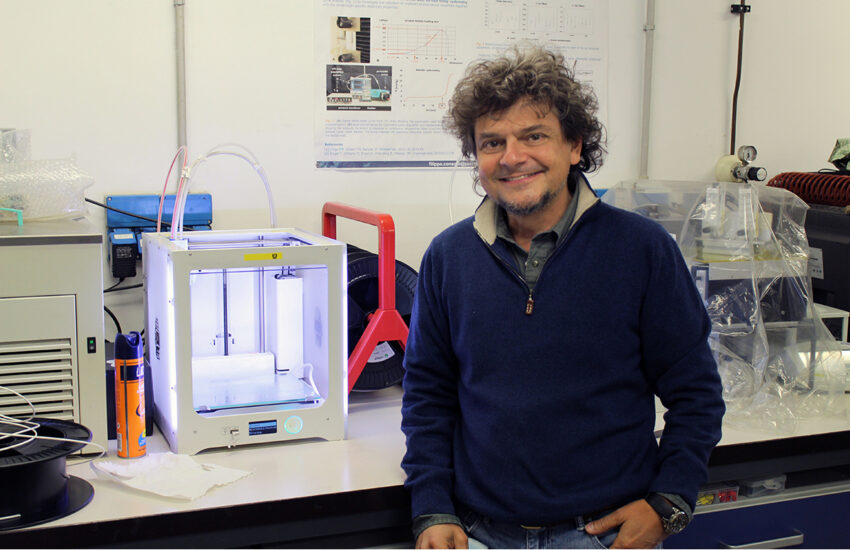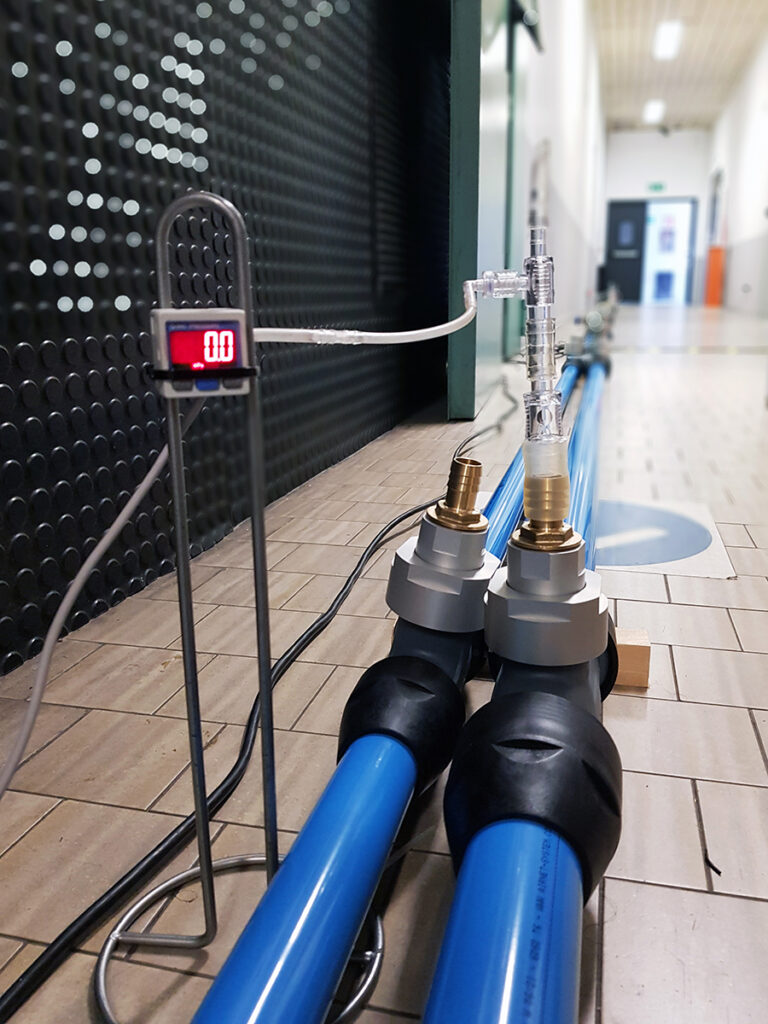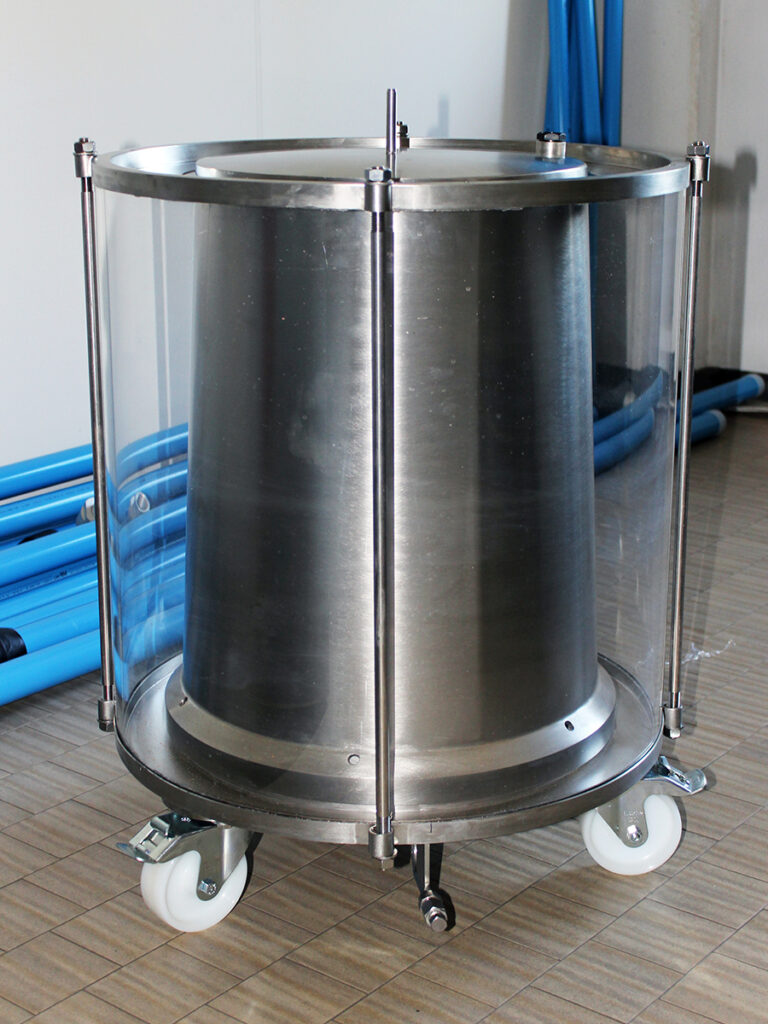Respiratory failure is the most serious symptom of Covid-19 and the most challenging in the clinical setting, being potentially fatal. Indeed, its treatment requires resources that do not suffice to face emergency situations. This is what happened during the “abnormal wave” of the pandemic, when many patients awaiting a bed on a ward could not receive adequate care. As a matter of fact, present day lung ventilation devices ensure customised treatment only in intensive care units.
The need to provide suitable support for patients experiencing emergency conditions inspired the creation of the Multiple Emergency Ventilator (MEV), an “emergency” project itself, involving both Politecnico di Milano and Policlinico di Milano, the main hospital of the city, in March 2020. It is now developing with Polisocial Award funds for society-oriented research.
We asked Gianfranco Beniamino Fiore, a researcher from the DEIB (Department of Electronics, Information and Bioengineering), to tell us about this experience.
Let’s start from the MEV. What is it and why is it different from other lung ventilators?
It is a small and rather simple system designed to offer multiple care to several patients at the same time, by modulating the quantity of respiratory mixture according to their number. Currently available machines are, instead, dedicated to a single patient. This involves renouncing personalised therapy, which is limited to the barest minimum, in order to gain a remarkable advantage, namely the survival of many emergency patients. Obviously, the MEV is not intended for prolonged use but as a “waiting room” for more targeted treatment.
Why is the MEV more suitable for emergency situations when resources are scarce?
We cannot say that the MEV is better than machines in use today. Instead, unlike those, it is not meant to be precise but versatile. In situations such as the one experienced in 2020, the number of patients admitted to intensive care units cannot be managed with conventional devices. Our idea is to have a tool that ensures patient survival, reduce the need for urgent clinical testing, understand with the doctor if ICU care is an actual necessity, and channel each person to the best treatment. In other words, this system features a dual function of buffering and triaging. The demand pressure on the single unit is reduced thanks to the patients’ re-distribution over time and across facilities. This helps to avoid overloading ICUs more than necessary. We are also developing the system in a modular form that allows it to be set up, disassembled and conveyed from place to place with quick and easy operations, even by non-experts and in temporary clinical settings, such as field hospitals.
So, improving clinical response does not solely depend on technological factors?
Unlike countries (such as tropical ones) that are regularly hit by seasonal epidemics and have therefore developed an awareness of emergency-related topics, we were not accustomed to it here. Paradoxically, we found ourselves fully equipped with precise and customized top-notch technology that was unsuitable for dealing with a mere survival problem with large numbers of people. In addition to machines, hospital department organization is also a critical factor. We do not address this aspect with the MEV, and neither do we claim to directly influence it, but we do believe that the availability of not only new but, especially, more flexible technologies can indirectly help both physicians and nurses make more targeted and well evaluated decisions. We shall thus be better prepared to face a new pandemic.
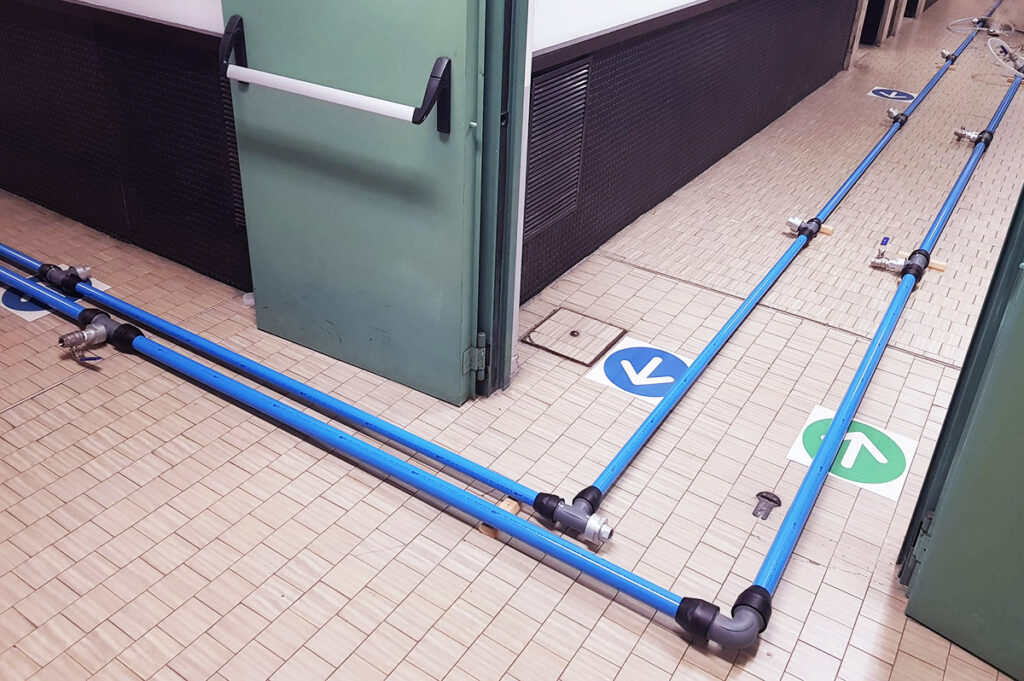
The device has now reached its development phase with a new project named Making MEV (Polisocial Award 2020). At what stage is the project today?
The prototype is almost ready. Sub-parts have been developed and individually tested and now we are verifying their functionality by making them interact with each other. We shall then move everything over to the Policlinico and, finally, test the system in a hospital setting by carrying out simulations.
What are the prospects and timing for its actual clinical implementation and, broadly speaking, when will it be handed over to society?
The estimated timeline is a couple of years after the project’s completion. This is primarily due to regulatory requirements, which have become more stringent over the years and which the system will be asked to meet. The safety and efficacy certification required for life-saving biomedical devices and systems, such as ours, relies on time-consuming pre-clinical and clinical experiments, as well as professional assessments the Politecnico cannot provide by itself. At that point an investment will also be needed, in order to launch the MEV in a somewhat particular kind of “market”. Since it is not a product on which a company can build an actual business, we will most likely have to attract some government grants or major sponsors. In any case, the private sector will have to be involved as the expertise required to develop a technological product that fully complies with regulations is typically found within large companies.
The MEV was conceived in March 2020, during the first lockdown, at the height of the contagion
We experienced a unique moment in our careers and lives. We worked at night, with phone calls at the most unthinkable times, locked up at home with our wives and children (as in my case). None of us had ever even thought that we would have to do research like this one day. It was something new to everyone. Fortunately, we were able to communicate remotely. This allowed for teamwork even without ever coming to the Politecnico. Hence, MEV was born in a purely virtual form as a kind of video game. So much so that, when we presented our new project at the Polisocial Award, we called it “Making MEV”. After days and nights spent over drawings, calculations and simulations, we said to ourselves, “the time has come to make it”!
What did it mean to do research with urgent goals in a situation of collective shock?
The two aspects are inter-linked. The urgency was mostly psychological, and it was particularly triggered by a situation of collective shock. As biomedicalengineers, we realized from the news that the available technologies were scarce and, despite being adequate in themselves, paradoxically they were no longer so due to their inflexibility. That’s when we realized the need to focus on the direction I described earlier. The insightful idea conceived by Prof. Baselli, a bioengineer at DEIB just as I am, during discussions with Dr. Zanella of the Policlinico proved to be well founded, since our simulations showed that the concept worked and could be effective. Instead, other similar ideas proposed here and there were not, as they were based on taking already available devices and using them on two or more individuals. This is completely unfeasible since such machines are conceived for customized treatment and are only effective on a single patient.
Was it difficult working side-by-side with intensive care physicians from the Policlinico who were already busy on the front lines during the pandemic?
It was especially challenging for the doctors! We targeted them with plenty of questions and they, despite the great fatigue of those months, helped us as they felt our research made sense. We were asking them to do something that was not easy. We wanted them to set aside the idea of personalized care, thus going beyond their point of view as physicians, and to imagine a simplified therapy model capable of ensuring the survival of the maximum number of patients.
What was their contribution?
First and foremost they contributed by listening to us, going beyond the differences between us and them. What most distinguishes an engineer from a medical doctor is that the former is inclined to generalize, while the latter has a specific vision of the patient. Clinicians analyse their patients to obtain information, even qualitative data, which the engineer is unable to perceive. We were asking them the effort to generalize their information. It cannot be taken for granted but we deem it necessary to rethink action in the face of such an emergency. I must say that especially Dr. Alberto Zanella, our main partner at the Policlinico, was very helpful. He supported us along with his department [Anaesthesia and Adult Intensive Care, Editor’s note]. He understood the potential of an idea such as MEV, and his support was critical for us.
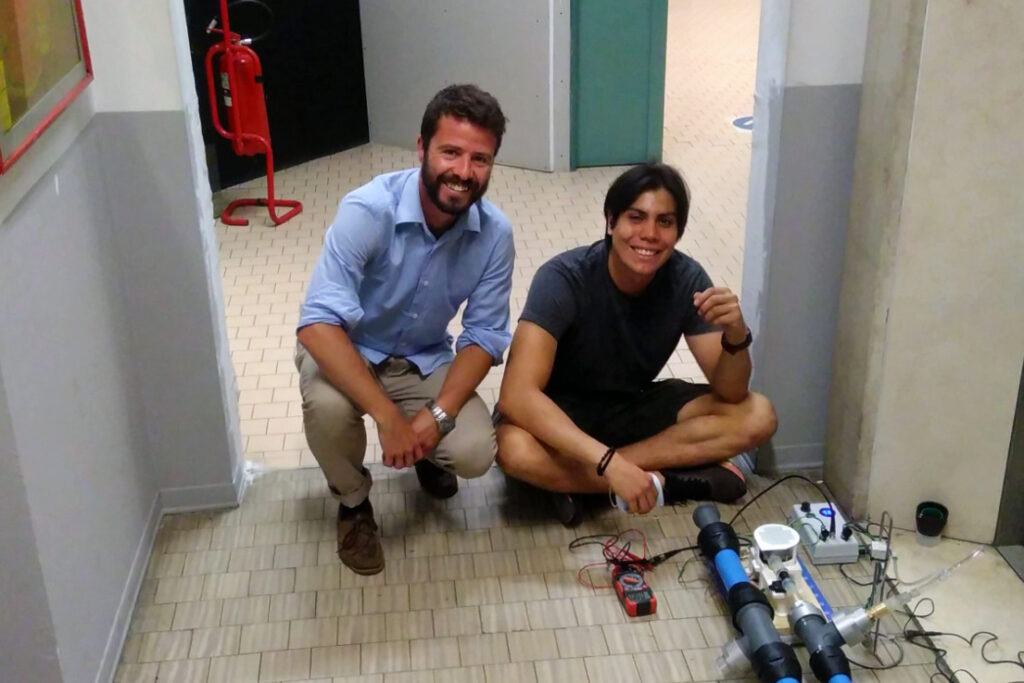
Your experience is emblematic of the convergence of research and social commitment. Is it always possible to combine these two principles?
I think a researcher should adopt both perspectives, not only in areas, such as the biomedical field, where a certain degree of social engagement is inherent (even when working with private companies). There are countries where research is considered a form of civic commitment, and it is no mere coincidence that the first step taken in a crisis is to invest in research. Of course, one cannot expect immediate results. In our case it was more a way of volunteering, which is a personal choice and whose rationale strays somewhat from that of research.
The MEV was also conceived with this spirit
We are referring to a very particular moment. Who did not feel the need to do something useful for the community in spring 2020? Even just by staying at home.
What would you advise a young researcher who wants to make such a choice?
I always advise young people, including students, to follow that crucial factor called passion before planning their future work. If you are enthusiastic about what you are doing, in the course of time you will become “good” at it and certainly find a job and career opportunities. I am convinced that there is a path for each of us, and that the biggest mistake is to make decisions based on opportunism or by following ephemeral trends, instead of making choices that are consistent with one’s own passions. This is also true concerning your question: if motivation is genuine, then research and social commitment can go hand in hand in a synergistic and spontaneous way.


